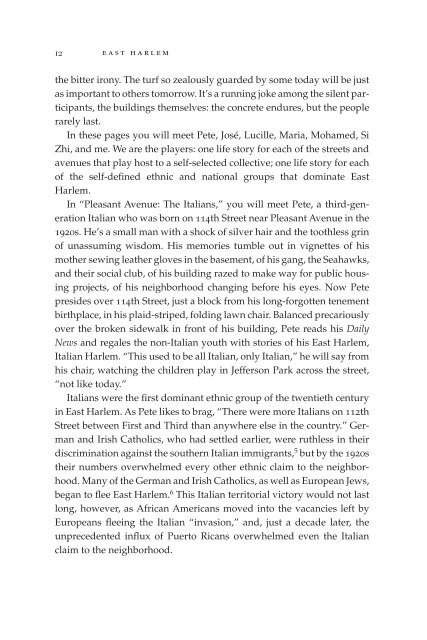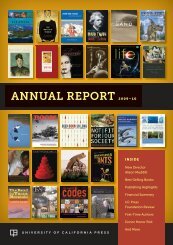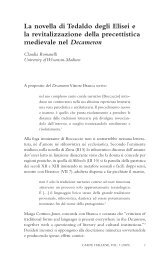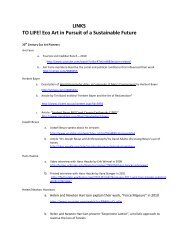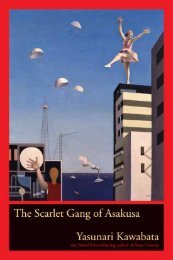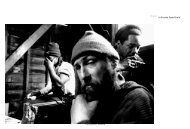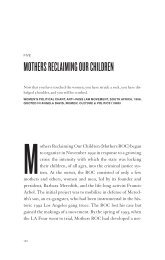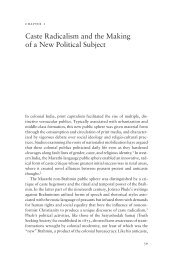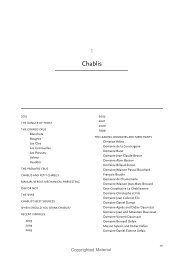Read Chapter 1 (PDF) - University of California Press
Read Chapter 1 (PDF) - University of California Press
Read Chapter 1 (PDF) - University of California Press
You also want an ePaper? Increase the reach of your titles
YUMPU automatically turns print PDFs into web optimized ePapers that Google loves.
12<br />
east harlem<br />
the bitter irony. The turf so zealously guarded by some today will be just<br />
as important to others tomorrow. It’s a running joke among the silent participants,<br />
the buildings themselves: the concrete endures, but the people<br />
rarely last.<br />
In these pages you will meet Pete, José, Lucille, Maria, Mohamed, Si<br />
Zhi, and me. We are the players: one life story for each <strong>of</strong> the streets and<br />
avenues that play host to a self-selected collective; one life story for each<br />
<strong>of</strong> the self-defined ethnic and national groups that dominate East<br />
Harlem.<br />
In “Pleasant Avenue: The Italians,” you will meet Pete, a third-generation<br />
Italian who was born on 114th Street near Pleasant Avenue in the<br />
1920s. He’s a small man with a shock <strong>of</strong> silver hair and the toothless grin<br />
<strong>of</strong> unassuming wisdom. His memories tumble out in vignettes <strong>of</strong> his<br />
mother sewing leather gloves in the basement, <strong>of</strong> his gang, the Seahawks,<br />
and their social club, <strong>of</strong> his building razed to make way for public housing<br />
projects, <strong>of</strong> his neighborhood changing before his eyes. Now Pete<br />
presides over 114th Street, just a block from his long-forgotten tenement<br />
birthplace, in his plaid-striped, folding lawn chair. Balanced precariously<br />
over the broken sidewalk in front <strong>of</strong> his building, Pete reads his Daily<br />
News and regales the non-Italian youth with stories <strong>of</strong> his East Harlem,<br />
Italian Harlem. “This used to be all Italian, only Italian,” he will say from<br />
his chair, watching the children play in Jefferson Park across the street,<br />
“not like today.”<br />
Italians were the first dominant ethnic group <strong>of</strong> the twentieth century<br />
in East Harlem. As Pete likes to brag, “There were more Italians on 112th<br />
Street between First and Third than anywhere else in the country.” German<br />
and Irish Catholics, who had settled earlier, were ruthless in their<br />
discrimination against the southern Italian immigrants, 5 but by the 1920s<br />
their numbers overwhelmed every other ethnic claim to the neighborhood.<br />
Many <strong>of</strong> the German and Irish Catholics, as well as European Jews,<br />
began to flee East Harlem. 6 This Italian territorial victory would not last<br />
long, however, as African Americans moved into the vacancies left by<br />
Europeans fleeing the Italian “invasion,” and, just a decade later, the<br />
unprecedented influx <strong>of</strong> Puerto Ricans overwhelmed even the Italian<br />
claim to the neighborhood.


